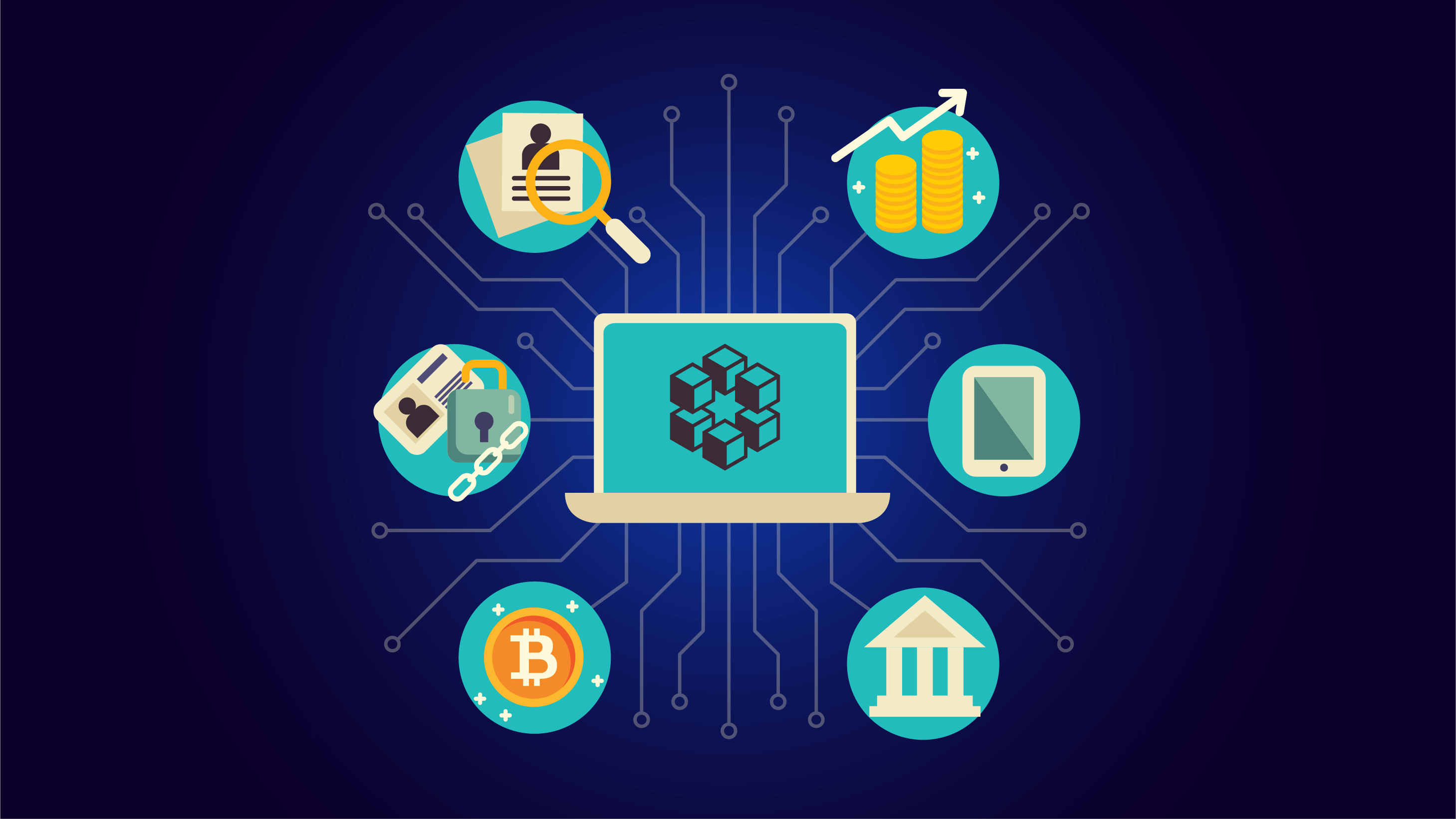Mathematicians call the principle of building a blockchain a “linked list”. Each of its elements depends on the previous and subsequent. By changing or removing one block, you break the sequence and activate the security mechanism.
From here follows the purpose of the blockchain – database authentication. The mechanism blocks attempts to change information, preventing one participant in the process from breaking the rules and benefiting from it.
Blockchain is considered relatively new technology
The word itself has become popular only recently. But the prototype of such a system appeared back in 1984, when mathematician David Chaum proposed his own technique for protecting important information based on linked lists.
The first blockchain was described by scientists Haber and Stornetta in a 1991 paper. And the first working model appeared in 1994 – it helped to confirm the authenticity of publications and protect them from plagiarism.
But the popularity of blockchain was brought by the manifesto of an anonymous IT specialist under the pseudonym Satoshi Nakamoto. In 2008, he presented his vision for a decentralized public blockchain.
Nakamoto says that the public network, which is not owned by any of the participants, should become a more honest and transparent alternative to the global financial system. This is how the idea of the first cryptocurrency, bitcoin, was born.

How does blockchain work?
Suppose you need to write down valuable information and make sure that no one can replace it. You record data digitally and encrypt it to ensure complete privacy.
This array is sent to all users (nodes) that have connected to a particular network. Each of them receives an exact copy. If you suspect substitution, it is enough to compare one copy with another.
But the process of comparing hundreds and thousands of strings is a time-consuming task. If there are hundreds of thousands of participants in the network, the solution of this problem will take all the computing power of the planet.
Therefore, the blockchain uses a checksum or hash. This is an encrypted header that is assigned to the data array. If you change at least one character, the hash will also change – this will become noticeable when comparing.
The blockchain platform is dynamic – it is designed to constantly add new information. Most often we are talking about transactions, that is, money transfers between users. But in theory, you can use the technology to authenticate anything—scientific publications, art, and ID cards.
For this, a chain of blocks is needed. Since information is added over time, another dataset must be attached to one dataset.
So that the blocks cannot be deleted or replaced, each of them is associated with the previous and subsequent ones. The technology is simple – block #2 contains not only its checksum, but also the hash of block #1. Accordingly, block #3 includes the hash of block #2, and so on. If you remove one link, you break the whole chain.
Who is involved in the formation of new blocks?
In private blockchains, this task is entrusted to the network administrator and those to whom he grants such powers. But in practice, another option is more popular.
In public blockchains, the block is formed by the participant who solves the mathematical problem before others. To do this, he needs powerful hardware capable of performing from tens of thousands to billions of calculations per second. The procedure for solving such problems is called mining.
To stimulate participation in the work and development of the blockchain, a reward is assigned for the formation of a new block – the miner receives a new unit of cryptocurrency or his share of the commission for making a transaction on the network.
So you can earn on mining. To increase the likelihood of receiving a reward, large players have formed their own distributed arrays (pools).

By connecting to them, miners rent computers to the pool, receiving their share of the profits. In conditions when there are millions of miners on the market, this scheme of work remains the most reliable.
The speed of block formation is determined by the creators of the blockchain. For example, for Bitcoin, it is approximately equal to 2048 blocks in 14 days.
If more processing power appears on the network, tasks are completed faster and the process speeds up. To solve this problem, the network changes the complexity of mathematical problems in such a way as to maintain a constant speed regardless of the number of participants and the power of their equipment.
The algorithm in which the blockchain is provided by mining is called proof of work – Proof-of-Work, PoW. He has alternatives.
Sometimes the formation of blocks is trusted by the most authoritative network participants who have the largest number of rewards (cryptocurrencies, tokens, etc.) at their disposal. This algorithm is called proof of ownership – Proof-of-Stake, PoS.
PoT – Proof-of-Time – the participant is determined by the time spent on the network;
PoA – Proof-of-Authority – the block is formed by the participant who received the largest number of votes;
PoSpace – Proof-of-Space – the right to create a block is given to the one who rented the largest amount of disk space.
In simple terms, the blockchain writes regularly updated information into blocks that are sent to all network members.
If one of them decides to replace or delete the data, the system will notice the forgery due to the discrepancy between the code checksums. The false chain will be corrected automatically, which will eliminate fraud.
